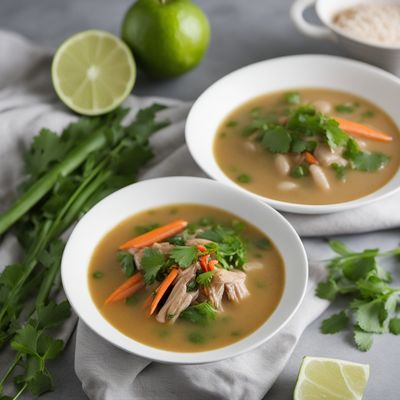
Ingredient
Turtle, green
The Delicate Delight of Green Turtle
Green turtle is a species of sea turtle that is highly valued for its succulent meat, which is tender and has a unique flavor. Its meat is often described as a cross between veal and chicken, with a rich, buttery taste. The texture of green turtle meat is smooth and velvety, making it perfect for various culinary preparations such as soups, stews, and even steaks. Its vibrant green color adds visual appeal to any dish it is used in.
Origins and history
Green turtles have a long history of culinary significance, particularly in Caribbean and coastal cuisines. They have been hunted for their meat since ancient times, with evidence of their consumption dating back to the time of the ancient Greeks and Romans. In many cultures, green turtle meat is considered a delicacy and is often reserved for special occasions or festive meals. However, due to conservation efforts and the endangered status of green turtles, their consumption is now highly regulated and restricted in many countries.
Nutritional information
Green turtle meat is a good source of protein and is low in fat. It also contains essential nutrients such as iron, zinc, and vitamin B12. However, it is important to note that due to its high mercury content, consumption of green turtle meat should be limited, especially for pregnant women and young children.
Allergens
Green turtle meat may cause allergic reactions in individuals with shellfish allergies.
How to select
When selecting green turtle meat, look for fresh cuts that are firm and have a vibrant green color. Avoid any meat that appears discolored or has a strong odor. If purchasing from a reputable seafood market, ensure that the meat is sourced from sustainable and legal sources to support conservation efforts.
Storage recommendations
Green turtle meat should be stored in the refrigerator at a temperature below 40°F (4°C). It is best to consume it within 1-2 days of purchase to ensure optimal freshness and quality. If storing for a longer period, it can be frozen for up to 3 months. To freeze, wrap the meat tightly in plastic wrap or place it in an airtight container to prevent freezer burn.
How to produce
Green turtles are protected species in many countries, and their hunting and consumption are highly regulated. It is not recommended for amateurs to attempt to grow or raise green turtles as they require specialized care and are protected by law.
Preparation tips
Green turtle meat can be prepared in various ways, including soups, stews, curries, and even grilled or pan-seared as steaks. It is important to note that green turtle meat requires slow and gentle cooking methods to ensure tenderness. It pairs well with flavors such as garlic, lemon, and herbs like thyme and parsley. When preparing green turtle meat, it is crucial to follow all legal and ethical guidelines regarding its sourcing and consumption.
Culinary uses
Green turtle meat is commonly used in traditional dishes such as turtle soup, turtle stew, and turtle steaks. It is also a popular ingredient in Caribbean and coastal cuisines, where it is often featured in festive meals and special occasions. Its delicate flavor and tender texture make it a prized ingredient in gourmet preparations.
Availability
Green turtle meat is commonly available in coastal regions and islands, particularly in the Caribbean. However, due to conservation efforts and restrictions on hunting, its availability is limited and regulated in many countries.




